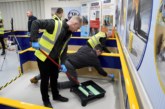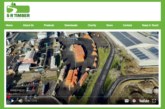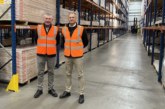
Joe Cox, Business Development Manager at sales enablement software developer, sales-i discusses how to convert sales in the ‘new economy’ — turning opportunity into bottom-line impact.
Turning a promising lead into a confirmed, repeat order is the holy grail of sales in even the most buoyant of economic climates but since the advent of the Covid-19 crisis, that challenge has become a whole lot more complicated. The pandemic has had an impact right across the construction sector with reduced budgets, unpredictable consumer demand and disrupted supply chains all conspiring to make ring-fencing existing building product sales that much harder, let alone converting new leads.
The way sales teams work has had to rapidly evolve over the past 11 months — and many sales professionals are finding they can no longer rely solely on once tried and tested techniques to get sales over the line in the age of remote working. But sales opportunities of course still exist for those individuals with the tenacity and foresight to identify them.
Here are five ways sales teams are adapting to seek out new routes to sales opportunities and unlock conversion in the new economy
New channels for a new era
Since the advent of the Covid-19 crisis, many sales professionals had their direct route to new and existing customers — the face to face meeting — effectively taken away overnight. While some sectors seamlessly migrated towards the use of conferencing software such as Zoom and Microsoft Teams to stay connected, this has not always been the case among smaller players in the construction sector.
Yet the most forward-thinking companies in the industry have realised that expanding and maximising routes to customers can pay dividends, and have sought to upskill sales teams to get best use out of available communications technologies.
What’s more, they’re increasingly making use of social media such as LinkedIn and blogging on their own company platforms to maintain contact with customers and seed sales messages into the marketplace to stay front if mind.
In such a competitive environment, sales teams need to be acutely mindful of how and where they engage with the wider marketplace — or risk losing out to more visible competitors.
Checking your value proposition
The pandemic has forced many businesses to change the way they operate to cater to rapidly changing customer priorities and market dynamics — be it adding more product lines or focussing on new markets. The way operators communicate these changes to the market is key to ensure existing and potential customers can easily differentiate one offer from another.
Where messaging is confused, mixed or USPs are difficult to articulate, sales teams can face an immediate uphill battle when looking to convert sales. And in today’s highly uncertain climate, more than ever sales teams need a laser-like focus on why their overall offer and individual solutions are the best customer fit.
Reconsidering the ‘pitch’
Reduced customer demand has meant many sales professionals more accustomed to rapid fire sales have had to refocus their efforts on the softer side of the role. Essentially this means a greater focus on collaborating with existing and potential prospects to forge relationships that can bear fruit over the longer term and lead to more referral sales as much as pursuing immediate sales opportunities in the here and now.
For those businesses that are unable to significantly prospect for new work now, building a potential customer pipeline for the future through ongoing relationship building could pay significant dividends once more favourable economic conditions return.
The shows must go on
Before the pandemic hit, trade shows, conferences and exhibitions were an ever-present feature in sales team calendars, presenting a powerful opportunity for individuals to meet prospects, showcase products and broker deals.
With physical events no longer possible, the great majority of these gatherings are still taking place virtually, albeit with different rules of engagement. Sales teams overlook these at their peril, especially when truncated event formats very often mean that ‘attending’ needn’t require days away from the office as typically used to the case.
Seizing the moment
Given the wider unpredictability of many aspects of the market right now, one of the keys to successful sales in this unprecedented era will be the ability to seize upon cross and upselling opportunities as they arise.
And with uneven customer demand likely to be a key feature of commercial life for the foreseeable future, the ability to interpret and analyse complex Covid-era buying trends can be a crucial weapon in a sales team’s arsenal.
Sales enablement software is becoming increasingly prevalent in the sector as more and more companies look to better understand their customers and pursue data driven sales strategies in response to today’s unique market challenges.
Looking ahead, we fully expect increased technology adoption to continue in 2021 as operators look to establish themselves on a more proactive, responsive footing to cater to unpredictable customer requirements over the longer term.
For more information on sales-i’s sales analytics software solutions, go to: https://www.sales-i.com/solution/by-industry/construction-building-supplies









